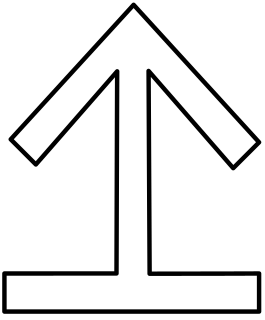
Ernst Bernhard Wilhelm Busch was a German Generalfeldmarschall during World War II who commanded the 16th Army and later the massive Army Group Centre.
The 1st Infantry Division, was one of the original infantry divisions of the Reichswehr and Wehrmacht that served throughout World War II.

The 10th Panzer Division was an armoured division in the German Army, the Heer, during World War II, established in March 1939.

The 13th Panzer Division was an element of the German Army, the Wehrmacht, during World War II, established in 1940.

The 8th Panzer Division was a formation of the WehrmachtHeer. The division was formed by reorganising the 3rd Light Division in October 1939. It was transferred to the west and fought in the Battle of France, in May 1940, and the German invasion of the Balkans in April 1941. Soon after the division advanced towards Leningrad under Army Group North in Operation Barbarossa, and would remain on the eastern front for the remainder of the war. Staying on defensive fronts, it saw action in the relief of Kholm in 1942, Orel and the withdrawals of Army Group Centre in 1943, until transferred to Army group South. The division then fought in a series of retrograde movements, back through the Ukraine, into Hungary and finally into Silesia and surrender in May 1945.

The 9th Panzer Division was a panzer division of the Wehrmacht Army during World War II. It came into existence after 4th Light Division was reorganized in January 1940. The division was headquartered in Vienna, in the German military district Wehrkreis XVII.
The 19th Panzer Division was an armoured division in the German Army, the Wehrmacht, during World War II. It was created from the 19th Infantry Division.
The 6th Luftwaffe Field Division was an infantry division of the Luftwaffe branch of the Wehrmacht that fought in World War II. It was formed using surplus ground crew of the Luftwaffe and served on the Eastern Front from late 1942 to June 1944 when it was destroyed during Operation Bagration.

The 83rd Infantry Division,, was a German reserve and security formation during World War II.

The 36th Infantry Division was a German infantry formation of World War II. It was formed in Kaiserslautern on 1 October 1936. During World War II it was mobilized in August 1939, as part of the first wave. It was later reorganized and re-designated the 36th Infantry Division (mot) in November 1940. It was then de-motorized, reorganized and re-designated the 36th Infantry Division on 1 May 1943. The division was destroyed at Bobruysk in June 1944 during the Soviet Operation Bagration. It was reformed on 3 August 1944 as the 36th Grenadier Division and renamed the 36th Volksgrenadier Division in October 1944.
Panzer Division Tatra was an armored division of the German Heer formed in Moravia in August 1944. The division was hastily formed during the Slovak National Uprising of 1944 when the Germans feared that Slovakia might break away from the Axis powers and open the way for the advancing Red Army. After a brief punitive expedition against the Slovaks, the division was converted into a training formation. In March 1945, it was reorganized into the 232nd Panzer Division and was lost fighting in western Hungary.

The 376th Infantry Division was an infantry division of the German Army during World War II, active from 1942 to 1944 in two separate instances.
The XXIX Army Corps was an infantry corps of the German Army during World War II, active from 1940 to 1945.
The 154th Infantry Division, also known as Commander of the Replacement Troops IV, Division No. 154, 154th Reserve Division, 154th Division and 154th Field Training Division was an infantry division of the German Heer during World War II.
The 209th Infantry Division was a German infantry division of the German Heer during World War II.
The 549th Volksgrenadier Division was a volksgrenadier infantry division of the German Army during World War II, active from 1944 to 1945. It was formed as the 549th Grenadier Division in July 1944 and became a volksgrenadier division several months later. Fighting on the Eastern Front, it was nearly destroyed in the East Prussian Offensive, with its remnants retreating west and surrendering to American troops at the end of the war.
The 159th Infantry Division was an infantry division of the German Heer during World War II. The unit, at times designated Commander of Reserve Troops IX, 159th Division, Division No. 159, and 159th Reserve Division, was active between 1939 and 1945.
The 168th Infantry Division was an infantry division of the German Heer during World War II. It was active between 1939 and 1945.
The 180th Infantry Division was an infantry division of the German Heer during World War II. The unit, at times designated Commander of Reserve Troops X/II, 180th Division, Division No. 180, and Operation Division No. 180, was active between 1939 and 1945.
The 252nd Infantry Division was an infantry division of the German Heer during World War II.







